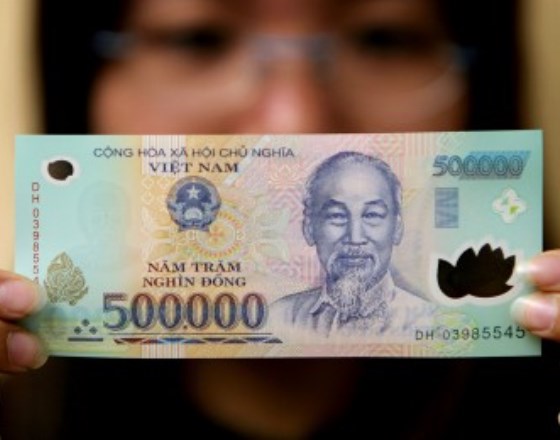
The appreciation of the Vietnamese dong, coupled with characteristics specific toVietnam’s transitional economy, leaves the State Bank of Vietnam (SBV) with difficult choices in conducting monetary policy. Luckily, the SBV retains adequate fiscal flexibility to respond to this pressure through its exchange rate policy.
Vietnam has, for several decades, pegged the dong to the US dollar, within a limited band of 1–2 per cent. This has been as an important measure of macroeconomic stability. The SBV promotes economic growth, controls inflation, stabilises the exchange rate and preserves the stability of the financial system. But it also subsidises inefficient state-owned enterprises (including state-owned commercial banks with a huge collection of non-performing loan portfolios), public development projects mandated by parliament, national budget deficits (including the large trade deficit with China), and other governmental international financial obligations. The SBV also uses interest rate caps and controls on credit frequently as monetary policy tools.
The SBV has resorted to an on-again, off-again monetary policy in order to accomplish these ends. This results in periods of high inflation followed by tight credit and high interest rates, often leading to business failures. Failed businesses are mostly private because they do not have public subsidies or borrowing privileges. High inflation rates lowers real national income, which foments discontent and possible social unrest and creates cyclical instability, personal bankruptcies, and waves of speculation in the real estate and equity markets.
Fluctuations in Vietnamese inflation also alter the difference in the inflation rates of Vietnam and its trading partners. This will have an impact on the exchange rate of the two currencies. If Vietnam’s inflation rate exceeds that of its trading partner then there will be upward pressure on the real exchange rate. There would be a consequent deterioration of Vietnam’s competitive position, with all the subsequent negative effects on the economy. To prevent a rise in the real exchange rate, the dong has to depreciate relative to the foreign currency in order to reflect the inflation differential.
But since the beginning of 2013, the real exchange rates of the dong with the US dollar and the renminbi have both been larger than one. This means that Vietnam’s competitive positions in its bilateral export markets with China and the United States have deteriorated. To improve competitiveness, the SBV could tighten monetary policy to reduce inflation. Alternatively, it could allow its currency to depreciate faster. Both entail short-term pain and long-term gain. The SBV will likely justify this by saying that it is necessary to bring jobs to Vietnam in the age of globalisation.
But that said, there is no need for drastic monetary action at this point in time. In December 2014, the real exchange rates against both the Chinese yuan and the US dollar sat at around 1.002. They are below those observed during 2008–09 (1.008 against China and 1.010 against the US). In other words, the real exchange rate does not need all that much adjustment now in order to improve the competitive position of Vietnam relative to its trading partners.
Vietnam has made progress, but it needs to persevere in bringing the real exchange rate down further to improve competitiveness.
original source: http://www.eastasiaforum.org/2015/07/04/vietnam-needs-to-bring-the-dong-down/
